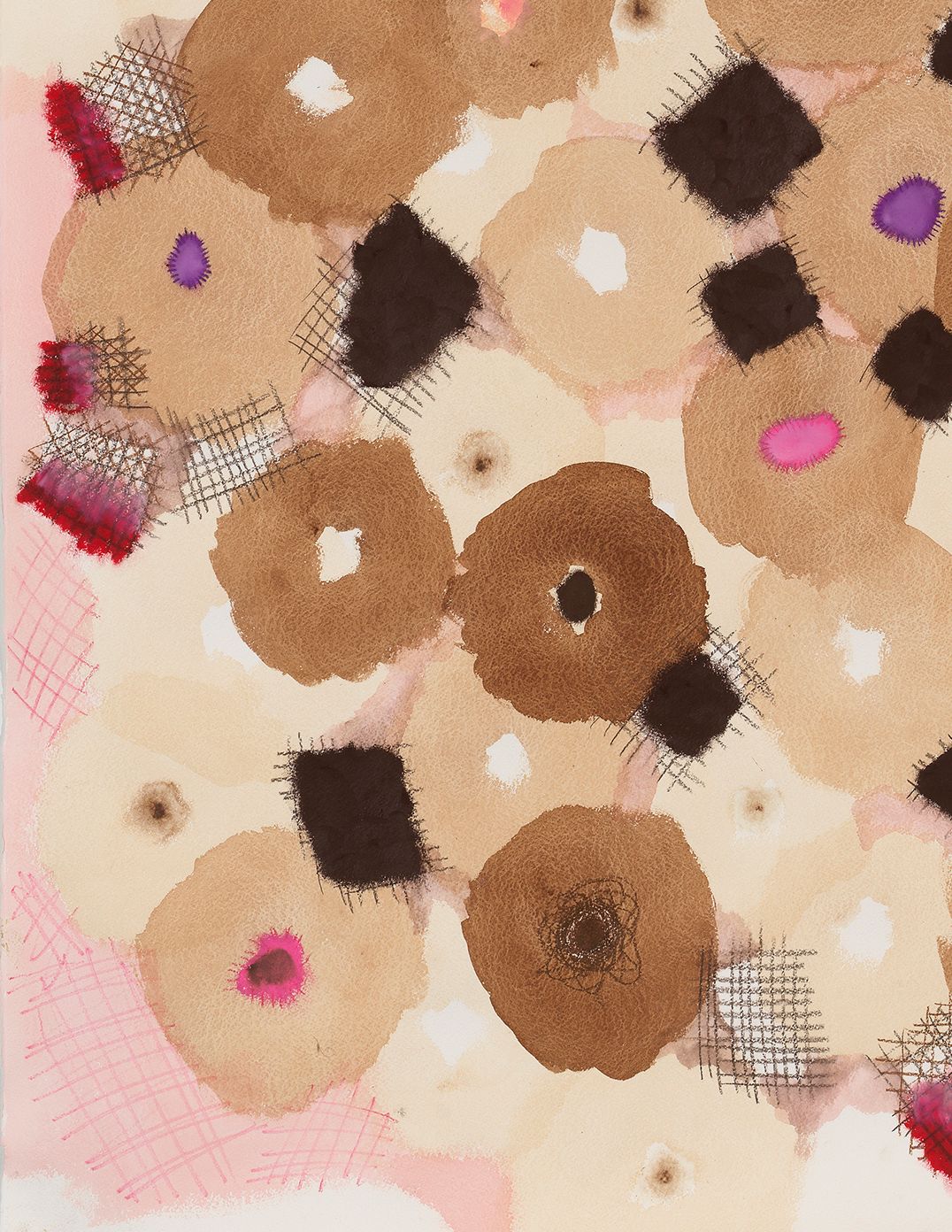FIAC 2021 – Escape Routes: Drawings
Sonia Almeida’s recent works on paper investigate how shifting models of temporality alter the ways in which society operates. The global quarantine has forced the world to move through time differently, questioning why and how it is structured. Almeida incorporates collected images of mechanisms used to measure temporality, including calendars, music scores, and dance diagrams. In doing so, she emphasizes the uncertainty of constructed timelines. Almeida has of late reflected upon the notion of “keeping time” and the ways in which time is fluid and folds in on itself. This led her to revisit her background in printmaking, since the woodcut method in many ways is a duplication of time.
Julien Bismuth’s recent works on paper feature the classic 17th century commedia dell’arte character, Pulcinella, identified by its signature baggy, white costume and long-beaked mask. Now a common trope in comedic skits, Pulcinella is known for interrupting an ongoing narrative by finding itself in a sticky situation only to eventually manage to find its way out. A saying in Latin goes: “Where there is a catastrophe, there is an escape route.” Throughout our collective period of pandemic-induced isolation – a massive interruption to everyday life – Bismuth has rendered Pulcinella onto the limited materials readily available to him: often found newspaper clippings and small canvases. This dreamlike character acts as a surrogate for all of us, as it roams without fear in scenes from the outside world.
Cameron Clayborn’s practice addresses the relationship between vulnerability and power, especially with regard to the complexities of Black, queer subjectivity. Clayborn’s drawings explore the symbolic excavation of architecture and one’s internal power. In these latest works, Clayborn layers different flesh-toned colored pencils, watercolors, and oil pastels to create amorphous images that recall biological masses, surgical wounds, and embroidery. Exploding, pulsating, and spiraling across the paper’s surface, Clayborn’s imagery evokes a constellation of suppressed energies on the edge of breaking free.
Anna K.E.’s recent works on paper investigate two topics: the body as an agent and receptor in a technologically and physically mediated landscape; and the absurd nature of the creative act. Each work contains an isolated and decontextualized image of a knee, or elbow, or foot—points of bodily conjunction—formed in a 3D animation program, and rendered at ultra-high resolution. The results are unsettlingly familiar. They have also been subtly augmented by K.E., as she inserts and blends drawn elements into the composition. Her body and subjectivity in these pieces function both literally and metaphorically as a cipher.
Baseera Khan’s highly poetic and political art practice uses their body as a site to investigate how subjectivity is shaped by social environments and capitalist systems. These recent works on paper document the artist’s reflections on their 2019 exhibition, snake skin, their first solo exhibition with the gallery. Personal experiences of being surveilled and how this coincides with the construction of gender and their Muslim identity greatly inform Khan’s work. In Haphazard Body Notes on My Body, 2021, we see a view of Khan from behind: contorting, duplicating, and mutating. Khan melds a diverse range of themes from subgenres of indie rock to interpretations of the Koran, often emphasizing cross-cultural and post-colonial themes.
For the past several years, Florian Meisenberg’s practice has engaged the various permutations of mediums, whether the canvas of a painting or the user interface of a digital device. In these latest works on paper, Meisenberg’s creative process has become increasingly collaborative with machines. Meisenberg first creates imagery and patterns on a computer, that are then rendered on paper and canvas by a CNC “drawing machine,” to which Meisenberg then finishes with his familiar gestural marks in oil paint. Distinctions between the analogue and the digital are effectively elided, opening a number of considerations about how knowledge is both disseminated and received. His evolving process provokes an ever more nuanced understanding of how the boundaries between the mind and the world – both physical and digital – are porous and arbitrary.






